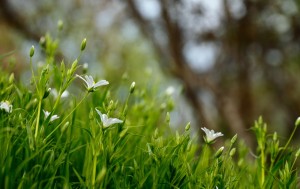Winter Tips for Your Lawn
Although Arizona isn’t subjected to the freezing temperatures most of the rest of the country endures around this time of year, winter weather still has an impact on Southwestern lawns and landscaping. As chilly temperatures begin to settle in for the coming weeks, here are a few winter tips to help keep your lawn healthy and happy until spring rolls back around.

Bermuda Grass in the Winter
Because of its hardy and drought-resistant nature, Bermuda grass has long been a favorite of Arizona homeowners. While it’s beautiful when it’s growing healthy and strong, colder temperatures can cause alarm for people who aren’t experienced in dealing with this type of lawn. Rest assured, this tough species doesn’t require much from you to get through the winter.
Here are some helpful hints:
- Sod With No Overseed – If you didn’t overseed your sod, it’s probably gone dormant by now. There’s nothing to do now but sit back, relax, and let your lawn rest until the thermometer starts to rise again.
- Overseeded Sod – If you overseeded your sod, it’s probably experiencing a little shock. As the bermuda grass begins to go dormant beneath the surface, small, quarter-sized yellow spots may begin to appear. These markings are nothing to fear. In fact, they’re an indication that your lawn was healthy when temperatures were warmer.
The spots occur because you probably overseeded during the warm season (late September to early October) when the bermuda grass was still flourishing and out-growing the ryegrass overseed. As it enters dormancy, it leaves behind evidence of the places where it was out-doing the overseeding.
To help your overseeded lawn heal these spots, switch from granular fertilizers, which are typically slow to get a reaction when the temperature drops, to foliar (spray) fertilizers during the winter months.
Winter Foliar Fertilizer 101
Many people fail to alter their lawn care routines when winter falls in Arizona. Although our state generally enjoys a mild climate between November and March, the temperatures can still drop below optimal levels if you’re using granular fertilizers. Foliar fertilizers’ formulas often withstand winter better than their granular counterparts, allowing your overseeded sod to perform at its best.
- Heating Elements. Some foliar fertilizers heat the plants up, helping to facilitate growth. Ferrous sulfate and endurant turf paint will both provide heat to your overseeding.
- Organic Options. There are certain organic fertilizers that work well in the winter. Seaweed extracts, kelp, and compost teas will help boost your roots while feeding the organisms within the soil that help your lawn grow. Ask our team about the best organic options for your particular species of grass.
Winter Watering 101
Your fertilizer isn’t the only element you should alter when winter comes – it’s also important to pay attention to the way you water your lawn. You should dramatically cut back on your watering schedule during the cold season. Your winter ryegrass requires a lot less water than your summer sod. You only need about 20 minutes of watering two to three times a week to keep your ryegrass properly hydrated from December through mid-February.
If you didn’t overseed, shoot for a monthly watering unless a good rainfall hits, in which case, you can wait to water until your lawn shows signs of stress.
Looking for a little more assistance? Be sure to check out our Evergreen Turf Fall Over-Seeking/ Winter Lawn Care Tips, and reach out to us if we can be of further service!
